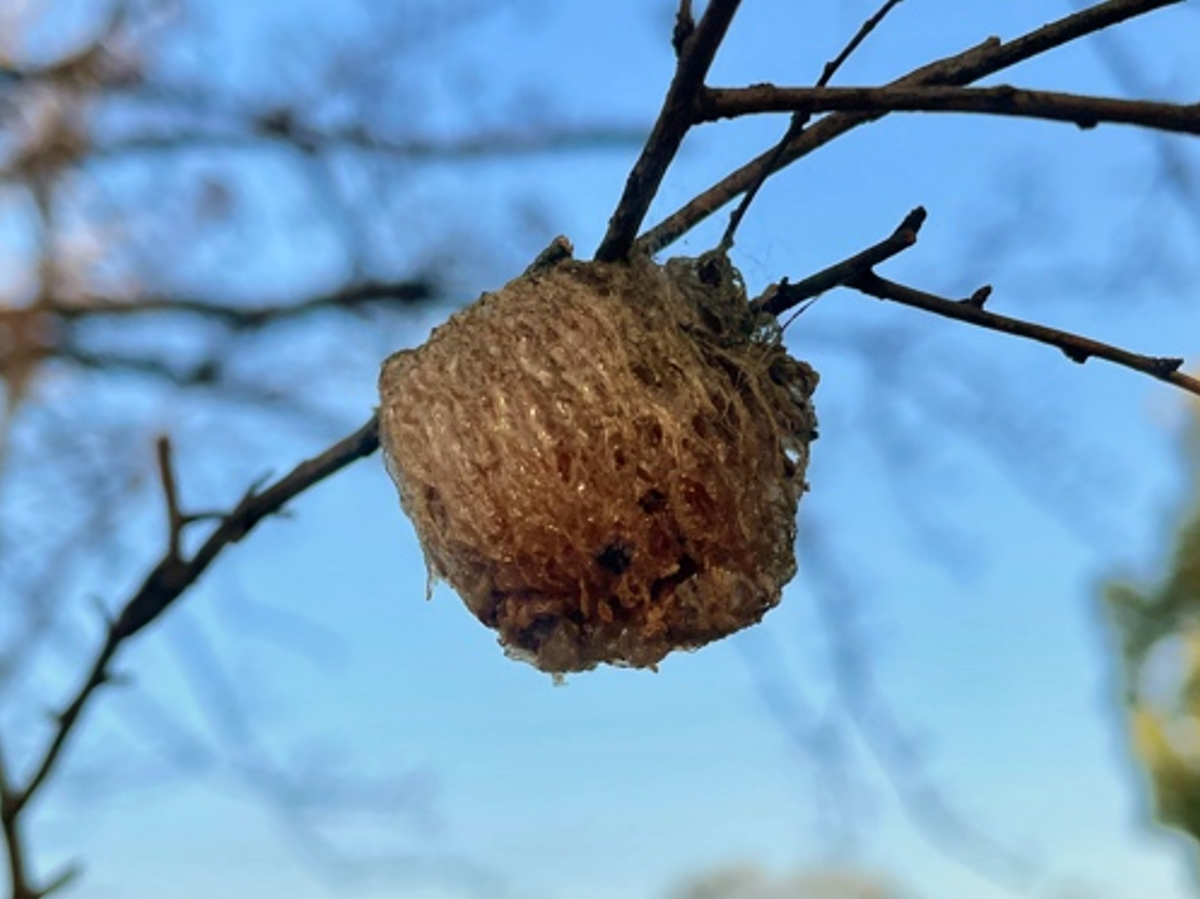Where Were the Bugs All Winter?
Most individual insects don't survive the cold New England winter. So how do the species survive? You might be surprised!

Have you ever shivered when you’re very cold? Shivering is a warm-blooded animal’s natural response to drops in body temperature. If our internal temperature drops even a few degrees below our 98-degree set point, we can be in serious trouble, and so this involuntary mechanism forces the body to generate heat and keeps our body temperature up.
But what about cold-blooded animals? Their metabolic system is very different from that of humans, which means they deal with the cold differently. When outside temps drop, so does their internal body temperature. Insects, the smallest of the cold-blooded animals, don’t shiver; their metabolism just slows down. But if they freeze completely, they’re goners.
Almost all individual insects in New England do not survive the winter. So how does their species continue to exist?
How do insects survive cold New England Winters?
The onset of colder weather triggers insects to prepare for winter. Insect species (not all individuals, but the collective species) survive the winter in several different ways.
Many insects lay eggs in an area they hope will be protected from frost, then they die and hope their eggs survive until spring. Laying huge numbers of eggs increases the probability that at least some will hatch in the spring.
In other species, only the egg laying females survive and all others die. This queen survives by burying herself in leaf litter or similar protective layer and slowing down to a dormant hibernation state, called brumation in cold-blooded animals. The breathing rate and metabolism gets so slow that no food is needed for the entire winter season. Their only assignment is not to freeze. That’s why you should not rake up all your leaves in the fall, or too early in the spring; there might be some insects already settled in for the winter, and disturbing them from their shelter will likely be fatal. In their current state, they won’t likely have the metabolic energy to find a new shelter, and they will freeze and die.
Some insects have a larval stage that spends the winter underground, below the frost line, a survival strategy used by many animals.
Finally, a very few insects actually migrate; the most well-known example of this is monarch butterflies.
Multiple Queens: One Species’ Safety Net
I witnessed first-hand one insect survival tactic at a friend’s house in October one year. He asked me how to remove a large nest of white-faced hornets (also known as bald-faced hornets) from inside a crawl space above his attached garage. He suggested plugging their entrance/exit hole and then spraying their nest through a hole he would drill in the garage wall. “Bad idea” I said. “Once you start spraying, they will be desperate to escape and may find a way into the walls of your house. It will be better to leave the exit hole open as you spray so they can flee, then plug the hole after they are gone.” That worked like a charm. He sprayed from inside the garage while I watched the exit hole. Hundreds of hornets poured out from the nest.

At one point I said, “Oh, look, there goes the queen.” But then I saw another queen and another queen and another queen. In all, around a dozen queens fled that nest. But wait, I thought—isn’t there only one queen per nest? What gives? A little research revealed what was going on. Just before the entire hive dies and the queen leaves to bury herself for the winter, the hive produces several more queens! By temporarily having more queens, which quickly mate and leave the hive, the odds are greater that at least one will survive the cold season ahead. What a brilliant evolutionary strategy!
Honey Bees Use a Different Strategy
Honey bees are a rare example of insects where the entire hive survives the winter. Honey bees keep the internal temperature of the hive around 92 degrees in the summer and near 60 all winter. They beat their wings to generate internal heat (similar to our shivering, but voluntary). Then they use their collective body heat to keep the queen and her eggs warm through the winter. You may wonder where they get the energy to do this, considering there are no flowers for nectar all winter. The answer: that’s what the honey is for! They eat their stashed honey to keep the hive energized all season long. Beekeepers always leave enough honey in their hives to support the residents throughout the winter and may even add some mid-winter to ensure hive survival.

Bugcicles in Late Summer
Before our last cold-blooded insect story, a brief physics lesson.
The rate at which a body loses heat is size-dependent: Small things cool off quickly; large masses cool at a slower rate. Shape also matters. Physics explains that heat loss depends on the surface area of a body compared with its volume. Think of animals like snakes or worms. Most of their body is surface and they are small. Therefore, they get cold fast. The optimum shape to minimize heat loss is a sphere, and the bigger the sphere, the lower the rate of heat loss. So, massive, round animals like elephants and hippos retain heat more efficiently. Because of their size and shape, warm blooded animals such as whales even can live in arctic waters. In humans, this may be why thin people tend to get cold, when rounder, more spherical people more often do not.
But how does that relate to the topic at hand?
In late September, the days are warm enough for normal insect activity, but the nights can get chilly. We have many flowers in our yard, and thus many insects, including honey bees from our hives. In late afternoon, as the sun sets, the temperature drops. Some bees slow down so much with the lowering temperature that they cannot make it back to the hive for the night. So, they just sit on a flower in torpor until the sun hits them the next day. Then they warm up and get back to work. Of course, if they get stuck in a frost, they may die.

Praying mantises are much larger than bees and are at their largest size late in the fall season. Remember, larger size means slower body cooling. Thus, as the evening cooling takes place, mantises remain active for an hour or so after the bees have gone into torpor. At that point, I have witnessed mantises walking around plucking and eating the bees like berries – no hunting required. Those “bugcicles” seem quite yummy! (Hmmm, should that be “praying mantis” or “preying mantis”?) The mantises themselves won’t survive the winter either but in late fall they lay large egg masses that will overwinter and produce their future families.
Cold blooded insects have figured out ways to survive even in the coldest areas of New England. Nature is amazing!



